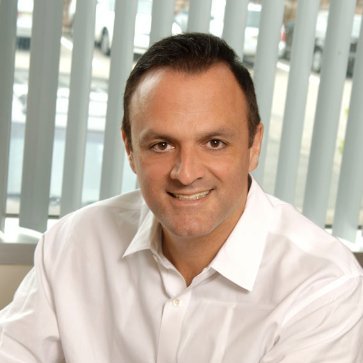How Pharma Can Continue Moving Beyond the Pill
By Anthony Bianchini, VP, Pharmaceutical Practice Leader at Xerox
Today, specialty drugs used to treat complex diseases such as cancer, rheumatoid arthritis and multiple sclerosis can average an annual retail cost that exceeds the median U.S. household income. The rising cost of many of these critical treatments has led the pharma industry down a value-based care path with key stakeholders – including patients and healthcare organizations – insisting that pharmaceutical companies prove the value of their drugs. When coupled with the increasing lack of medication adherence, a new solution that goes beyond the pill may be necessary for the pharma industry to reach its next phase and focus on value-based care.
One solution that is growing in notoriety is digital health – from ingestible sensors that can relay data to a patient’s smartphone, to wearables that can continuously monitor a patient’s vitals and transmit that critical data to a physician. While there are many obstacles to overcome before digital health can be considered truly mainstream, it’s important for the pharma industry to take a closer look at the benefits of going beyond the pill and leveraging technology to deliver better care resulting in better patient outcomes and potential savings to the overall health system.
Here a few thoughts to consider:
Medication adherence and value care go hand-in-hand
The push for digital health can be seen as coming from two collaborative sides: medication adherence and the need for value-based care. These shouldn’t be viewed as separate concerns because as adherence increases, patients stay on medicine longer and as a result, pharma companies can improve health outcomes and demonstrate the value of their drugs. Because digital health is trackable, the idea is that it can help physicians communicate the importance of adherence more clearly and augment that importance with data.
Smartphones are digital health’s best friends
There are a lot of innovative technologies in the pharmaceutical field, but a patient’s smartphone might just be one of the most useful. Consumer trends are moving farther away from traditional information platforms and more towards mobile devices. Seventy-two percent of U.S. adults report owning a smartphone and the more pharma can adapt to this usage, the better it can connect with patients on their own terms. As an industry, we need to create our websites and portals more in-line with how consumers consume information and view the web. Ideally, Pharma needs to integrate new technologies, apps and websites into normal patient workflows to ensure an optimal engagement. Consider this scenario: a patient takes a pill with an ingestible sensor that relays a signal to their smartphone that then sends a push notification or text message encouraging patients to report feedback required for specialty medications. This data is then sent to payers and physicians and there’s no unnecessary step or inconvenience for the patient.
Digital health needs to be consumer driven
Digital health isn’t without controversy, and bioethics will be a significant concern from here on out. Some say it infringes on the rights of patients to control their own health, which is why it must be consumer driven in order to be successful. Consent must always be applied to digital pills and data derived from wearables and smartphones. Human factors such as use-related risks and patient education will also present a challenge for pharma to overcome with their end-users and physicians. This will require more effort on pharma’s part to talk up the good they do for patients – whether it’s temporarily making drugs more affordable so patients can get the medications they need, or promoting the positive health outcomes digital solutions are producing. This will require a significant behavioral change in how patients have typically managed drug therapy. As this market continues to mature and more patients are exposed to the value of digital health, they may be more inclined to welcome this new way of thinking and managing their overall health.
The biggest roadblocks are yet to come
Still in its infancy, digital health solutions are going to hit a catastrophic roadblock if pharma doesn’t act quickly to recognize the significant role of data. These solutions, from digital pills to personal monitors, all have the possibility of seeing a generic equivalent that could touch the lives of billions, but the way data is collected, managed and reported must first be perfected. Previous attempts of value-based contracts for digital medicine have stalled because there was limited data to support the outcome. From a privacy standpoint, it’s still to be determined who will rightfully own the data and how it will be captured on a wide scale. The FDA is also being very cautious around medical decisions on technology. While digital medicine is in use in clinical trials, pharma will have to demonstrate value to the FDA by leveraging real world data with data derived from controlled trials and making that a regular component of the approval process. Once there is a broader data set and better interpretation of the data, we can expect better adoption rates for digital health.
Though the digital health market is around $40 billion there’s still the struggle of capturing and proving the relevancy of the data being captured by wearables and personal monitors. There are a number of benefits these solutions can bring to the table, from helping patients get healthier and helping physicians improve health outcomes of their patients, to helping payers negotiate the cost of drugs and helping pharma prove the value of their products. The possibility of generic digital pills that reach a widespread patient group is still nearly a decade away, which means there’s time for pharma to align with digital healthcare solution providers to bring more realistic ideas to more patients.
About the author
Anthony Bianchini is the VP, Pharmaceutical Practice Leader at Xerox. He has extensive experience in consumer and HCP interaction strategies and execution, as well as an established record of success in delivering cost-effective multi-channel interaction results through creative problem solving, team building and strong consultative skills.



